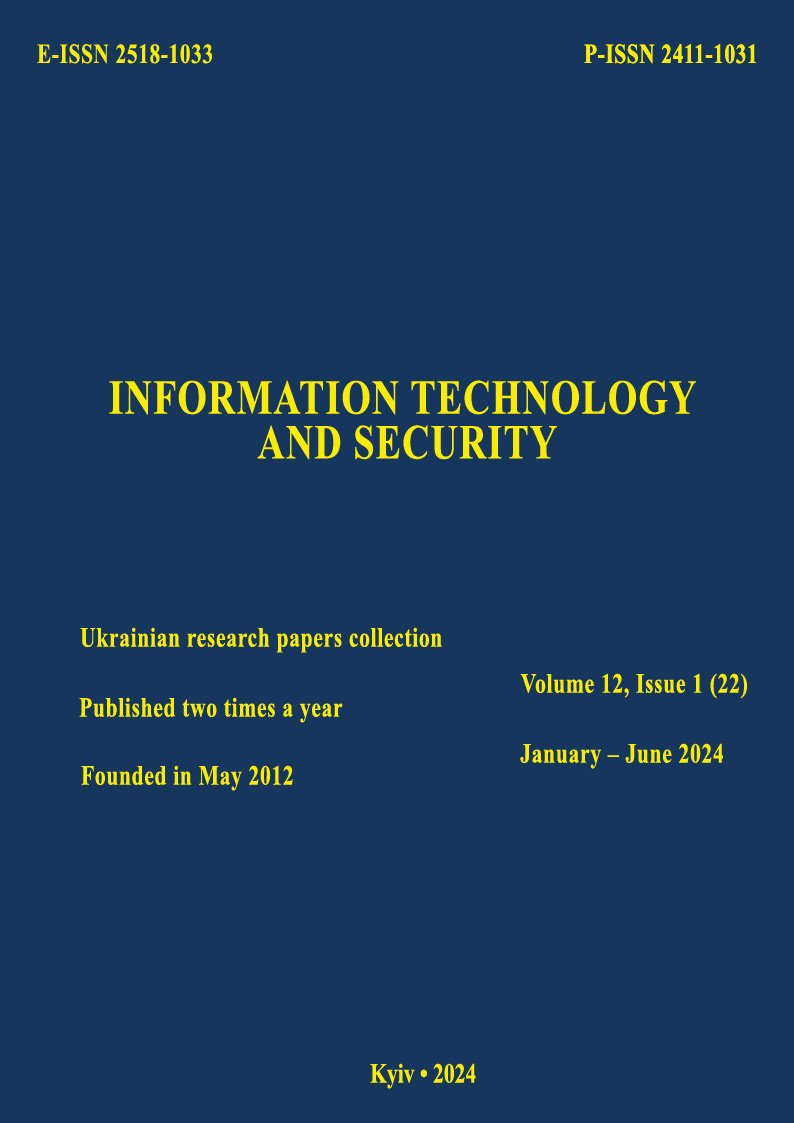Development of parabolic antenna irradiator for tropospheric communication station
DOI:
https://doi.org/10.20535/2411-1031.2024.12.1.306278Keywords:
tropospheric radio communication, ultrashort waves, antenna system, parabolic antenna, irradiator, horn, radiation patternAbstract
The currently existing tropospheric stations, due to high energy consumption and limited signal formation capabilities, and radio relay stations, also due to limited communication range, require new technological solutions. One such solution proposed is the creation of a tropospheric-radio relay station with completely redesigned radio equipment. The Institute of Special Communications and Information Protection, in collaboration with a research institute, developed a scheme for such a station, which was tested in field trials on a real tropospheric radio line with a length of 155 km. Our specialists were involved in the development of two antenna devices. A detailed analysis of the current state of tropospheric communication station development in the world was conducted, and the possibilities of modernizing existing stations, such as the R-423-M, were considered. Based on the results of the analysis, it was proposed not to conduct modernization, but rather to develop a new generation of tropospheric communication stations. According to the accepted station construction concept, its transmitting and receiving parts were developed as two separate units (external and internal). The external unit for conducting field trials was located on the antenna, allowing for the maximum reduction of signal losses in the antenna-feeder paths. The components of the internal units were housed in the closed body of a vehicle. This provided additional convenience for the operator and reduced the requirements for climatic conditions. The antenna block of the transmitter includes a power divider, a power amplifier block (eight power amplifiers of 10 W each), a two-mirror parabolic antenna with a hyperboloid small mirror, and an eight-element horn feed that can be powered in such a way that the output wave will be either linear or circular polarization.
References
T.M. Narytnyk, V.M. Pocherniaev, and V.S. Povglib, Digital radio relay and tropospheric communication lines. Odesa, Ukraine: ONAC, 2019.
O.V. Vakulenko, and B. A. Nikolayenko, SRSH-5000 broadband radio relay station (R-402 radio relay station). Kyiv, Ukraine: ISZZI KPI named after Igor Sikorsky, 2019.
V.P. Manoilov, and P.P. Martynchuk Methods of calculation and measurement of parameters and characteristics of microwave antennas. Zhytomyr, Ukraine: PE “Ruta”, 2021.
Downloads
Published
How to Cite
Issue
Section
License
Copyright (c) 2024 Collection "Information Technology and Security"

This work is licensed under a Creative Commons Attribution 4.0 International License.
The authors that are published in this collection, agree to the following terms:
- The authors reserve the right to authorship of their work and pass the collection right of first publication this work is licensed under the Creative Commons Attribution License, which allows others to freely distribute the published work with the obligatory reference to the authors of the original work and the first publication of the work in this collection.
- The authors have the right to conclude an agreement on exclusive distribution of the work in the form in which it was published this anthology (for example, to place the work in a digital repository institution or to publish in the structure of the monograph), provided that references to the first publication of the work in this collection.
- Policy of the journal allows and encourages the placement of authors on the Internet (for example, in storage facilities or on personal web sites) the manuscript of the work, prior to the submission of the manuscript to the editor, and during its editorial processing, as it contributes to productive scientific discussion and positive effect on the efficiency and dynamics of citations of published work (see The Effect of Open Access).

